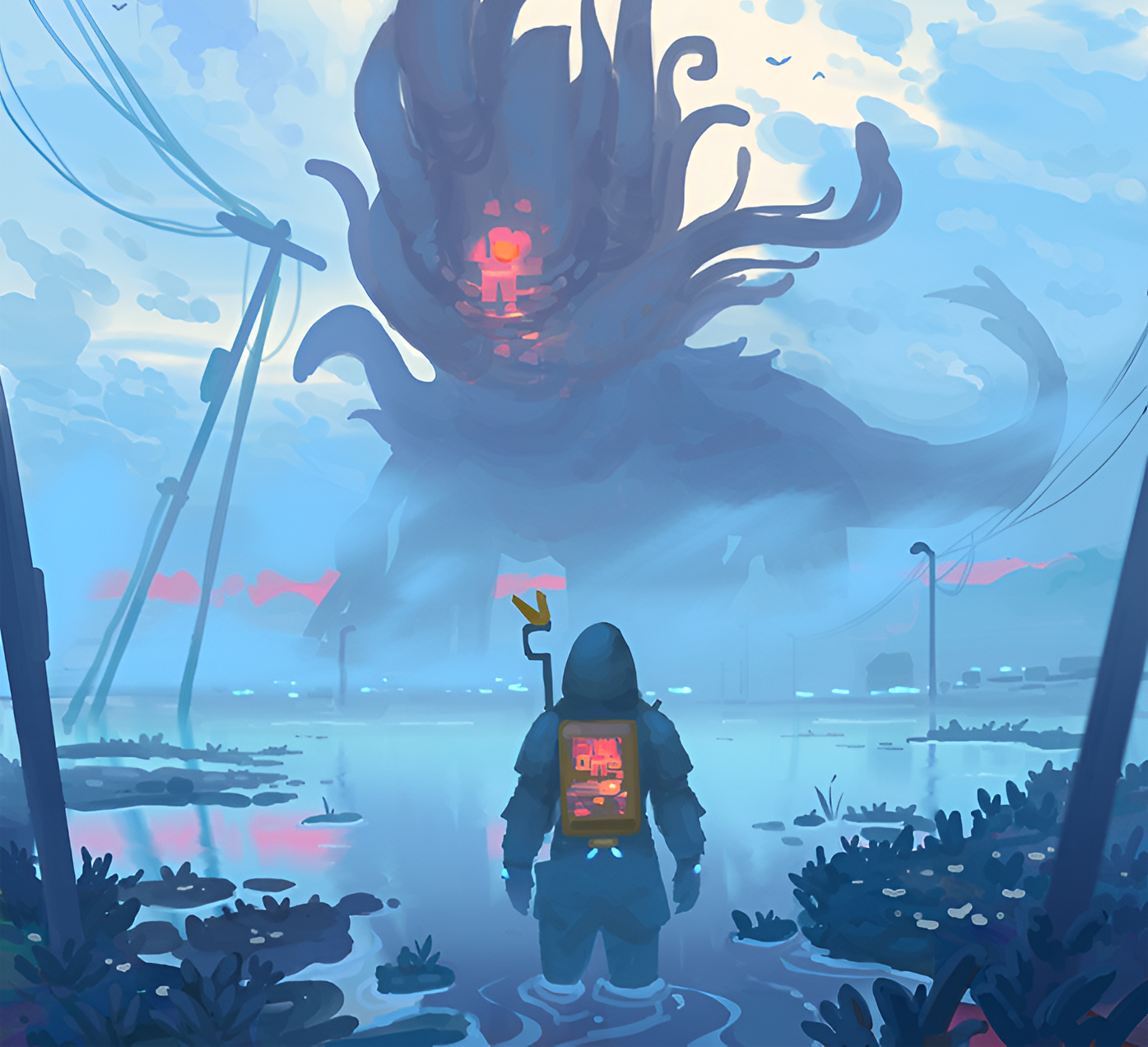Death reveals itself in mere flashes. Its footprints — or claw prints, if you prefer — emerge for fleeting moments in a news story on the electric box or a tale told by a friend of a friend. The world can stop still in these moments because one day, one final day, our worlds will stop too.
Our brains hide death’s presence, emotionally and mentally blinding us to its possibility. We know it’s real, but it doesn’t really feel it. Death is something that happened or is happening to someone else. Someone died two weeks ago and someone is expected to die two months from now.
But that someone is never us.
Death Stranding is precisely about that illusion, those rose-tinted glasses that nature uses to trick us into going to work — or into doing just about anything — despite every moment bringing us closer to death. Here, Kojima and co. pull back that censorious mental construct to show us the world in its totality: death is absolutely fucking everywhere. It’s there on your commute to work, it’s there every time you eat, it’s there every time you lift that weight — car crash, choking, heart attack. We are utterly immersed in death, and our literal attempts to outrun it are but a brief respite from its inevitable re-emergence.
Kojima isn’t using Death Stranding to present our world in some radical, altered state, but our world in its true, unfiltered one. A world where death is literally omnipresent, a world where the absence of people and the threat of that absence haunts society and how it operates. It’s a place physically scarred by a traumatic event — its towns living cemeteries whose buildings are boxy concrete monuments to the death of civilisation and the lives people led before.
That, of course, is fundamentally how our world works too — we’re just less willing to admit it. It’s an unspoken tension that sits are the heart of our lives, a collection of thoughts and feelings that sit at the back of our minds that emerge periodically like the Beached Things of Kojima’s creation. It’s why, when diagnosed with some terminal disease, things just don’t matter anymore — not like they used to.
That mental construct hiding death is vanquished and so death is all we can see.
And yet so many of us know stories of how quickly that construct returns to view. It happened once, but it won’t happen again — not to me. The cyclist in the crash, the heart attack then back on the bacon, the lung cancer scare out by the smoking shed — our fear of death can be as momentary and as fleeting as life itself.
But Death Stranding is a reminder not to let the censorious mental construct take too much hold. It’s an invitation to voluntarily dismantle it and live a minute or hour or day conscious of the death that surrounds us like citizens of its barren world. Death Stranding is a lens through which to live without that filter, in the safety of a space we can summon with the press of a button.
If removing that construct for a bit is the cure for taking life for granted, then Heartman is the embodiment of becoming consumed by what you see when it’s gone. He’s trapped by the promise of finding the wayward soul of his dead wife and daughter. A striking example of how a death can submerge our lives in emotional permafrost. A warning, perhaps, that attempting to defeat death leads to a life that only emulates it. Stranding’s message, then: know death, understand it — but don’t let it consume you in mind long before body. Heartman’s position is one of a man who effectively spends his living life wanting to be dead.
In Kojima’s universe, corpses are quickly incinerated to prevent them becoming human nukes. In the here and now, we do the same: the one-week funeral is our fruitless attempt to contain the emotional fallout caused by the death of a loved one, to put such a calamitous event to rest forever. A quick burial or cremation is a way of containing the emotional explosion from contaminating the living world.
It’s why there’s something deeply meditative about Death Stranding. The worst has happened. Death is upon all of us, and the veil has been removed. We can stop pretending that death doesn’t drive every decision we make. We’re allowed to admit that death is everything and act accordingly. That facade has dropped.
It really posits that the world is out to destroy us, a world in which even the rain which falls from the sky seeks to shorten our calendars. You can see how a world like that drives its citizens to hide under concrete blocks, to limit our contact with people, places, and things. That’s just like our world, too: war, weather, disease, crime — more than enough excuses to retreat into the living coffins of Kojima’s creation.
Death stranding is a reminder of why exactly we shouldn’t do that, a reminder that a life obsessed with death may not be a life worth living at all. It’s a dour reality to acknowledge: it’s all temporary, and we’re all going to die. And, as the game duly notes, the extinction of humanity is inevitable — which is certainly true on a micro scale, if not macro. Yet there’s something about acknowledging death and cracking on anyway — about quite literally putting one step in front of the other in spite of that inevitable oblivion.
Death Stranding, then, tells us that we shouldn’t let our fear of death invite the very thing we were so desperate to avoid in the first place: being alive without truly living.
Image: https://www.dualshockers.com/death-stranding-fan-art-poster

Leave a Reply